This page is part of the DaVinci PDEX Plan Net (v0.1.0: STU 1 Ballot 1) based on FHIR (HL7® FHIR® Standard) R4. The current version which supersedes this version is 1.2.0. For a full list of available versions, see the Directory of published versions
The Payer Directory Implementation Guide is based the Validated Healthcare Directory Implementation Guide (VHDir), an international standard. The VHDir authors developed the IG to support a conceptual, centralized, national source of healthcare data that would be used across multiple use cases. The use of VhDir as the conceptual base for the Payer Directory Implementation Guide, including reuse by reference of a number of the extensions defined there, is intended to protect implementors of the Payer Directory IG from rework/remapping when the VHDir concept reaches implementation, and becomes a source of data for the Payer Directory. The API is based on the HL7 Validated Healthcare Directory IG. The primary changes are to: 1) remove the validation and restriction resources, 2) use US Core for R4 as the base profile, 3) eliminate some of the extensions that are not necessary for this use case, and 4) reduce additional constraints (e.g. search criteria, cardinality, and MustSupport) where appropriate.

The diagram below depicts the scope of this implementation guide (IG). The IG defines the API that exposes a payer’s provider network (including pharmacy locations where appropriate) for access by a consumer or provider application. This is a query only API (GET) and does not support PUT or POST.
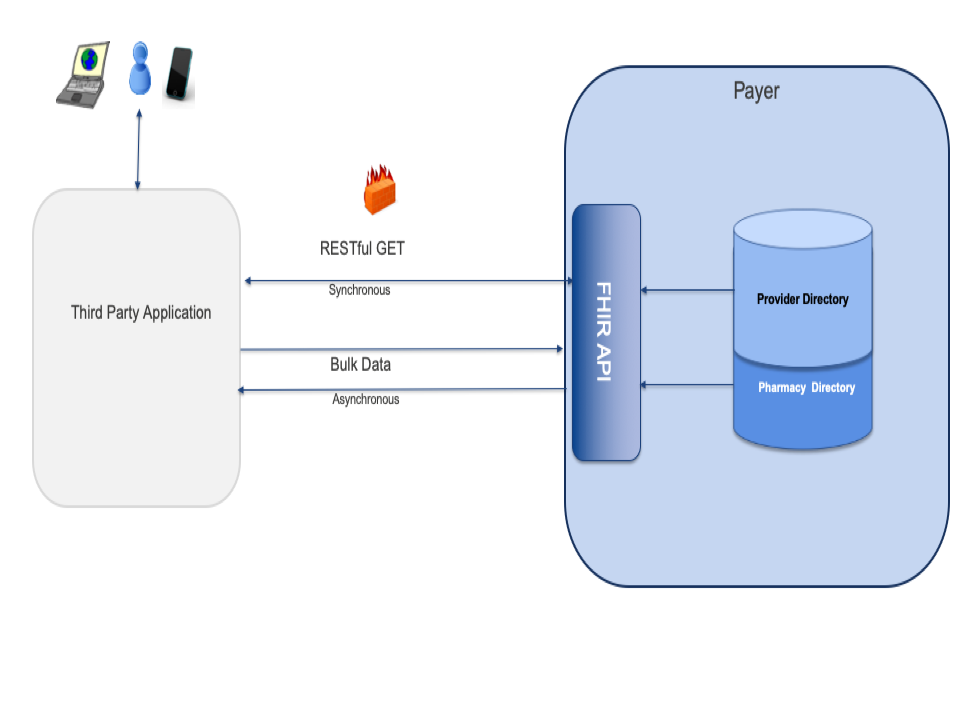
This implementation guide was written for a US audience and profiles resources from the R4 version of the US Core IG, where available (Practitioner, PractitionerRole, Organization and Location), and otherwise from R4 (OrganizationAffiliation, HealthCareService, Endpoint). Alignment with VhDir is maintained by using extensions from VhDir where possible.
Provider directories play a critical role in enabling identification of individual providers and provider organizations, as well as characteristics about them. Provider directories support a variety of use cases, including:
NPI = 1237551547 GET https://davinci-plan-net-ri.logicahealth.org/fhir/Practitioner?identifier=1237551547
https://davinci-plan-net-ri.logicahealth.org/fhir/PractitionerRole?practitioner.identifier=1235733566
Note: the following diagrams provide a high-level view of the relationships between resources used in this IG. They do not necessarily reflect all of the relationships/references between resources.
A practitioner is a person who is directly or indirectly involved in the provisioning of healthcare.
PractionerRole describes the relationship between a practitioner and an organization. A practitioner provides services to the organization at a location. Practitioners also participate in healthcare provider insurance networks through their role at an organization.
Figure 1: Practitioner and PractionerRole

Figure 2: Organization
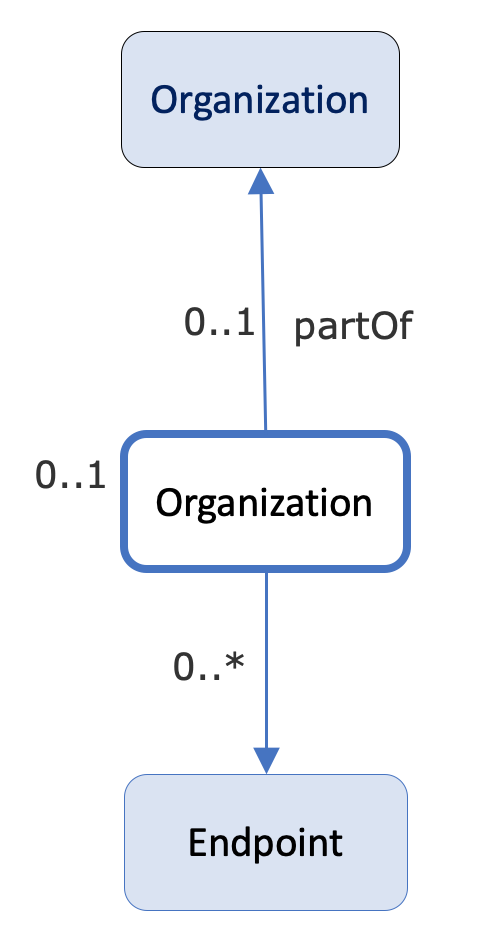
Similar to PractitionerRole, OrganizationAffiliation describes relationships between organizations. For example: 1) the relationship between an organization and an association it is a member of (e.g. hospitals in a hospital association), 2) an organization that provides services to another organization, such as an organization contracted to provide mental health care for another organization as part of a healthcare provider insurance network, and 3) distinct organizations forming a partnership to provide services (e.g. a cancer center).
Figure 3: OrganizationAffiliation
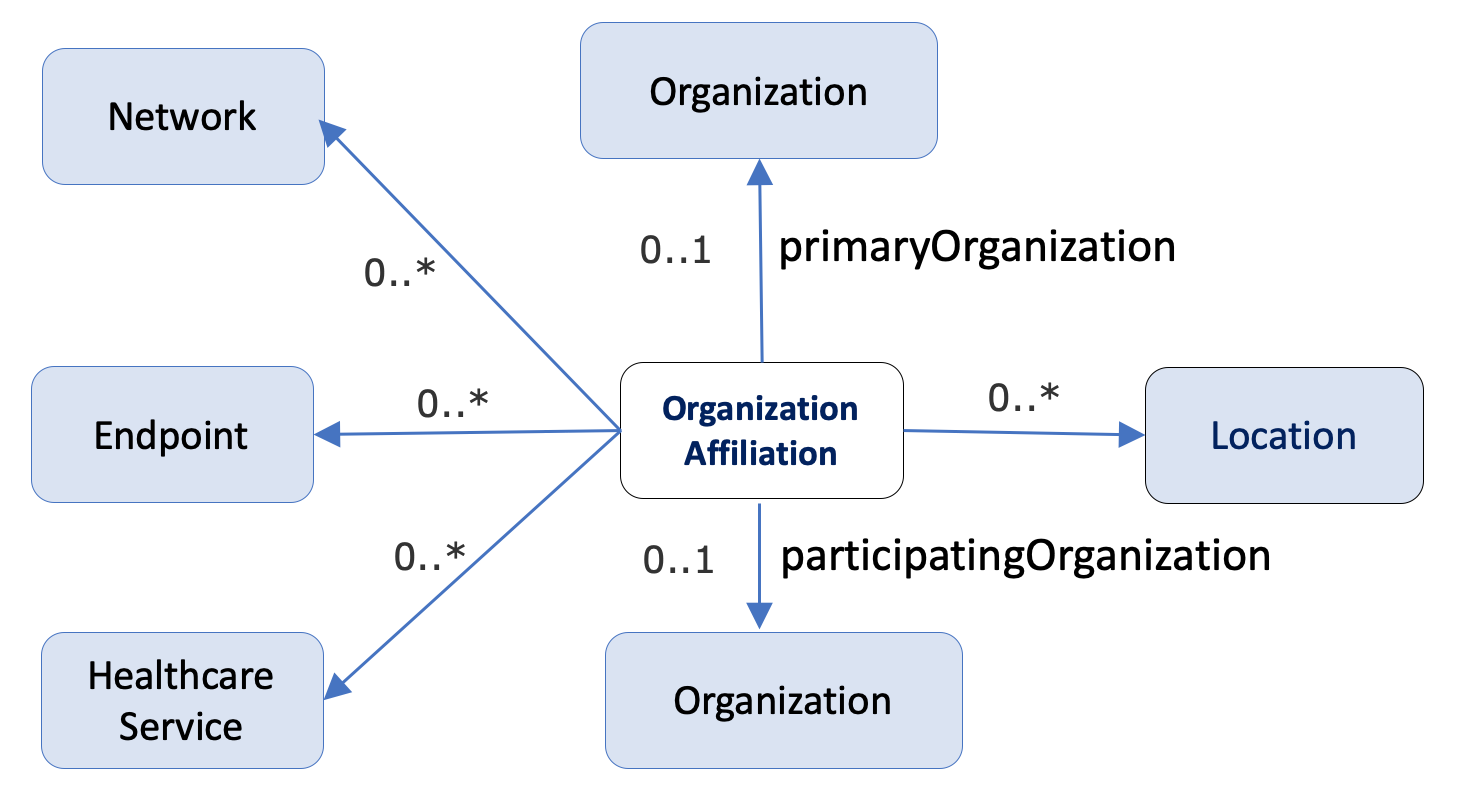
InsurancePlan describes a health insurance offering comprised of a list of covered benefits (i.e. the product), costs associated with those benefits (i.e. the plan), and additional information about the offering, such as who it is owned and administered by, a coverage area, contact information, etc.
Figure 4: InsurancePlan
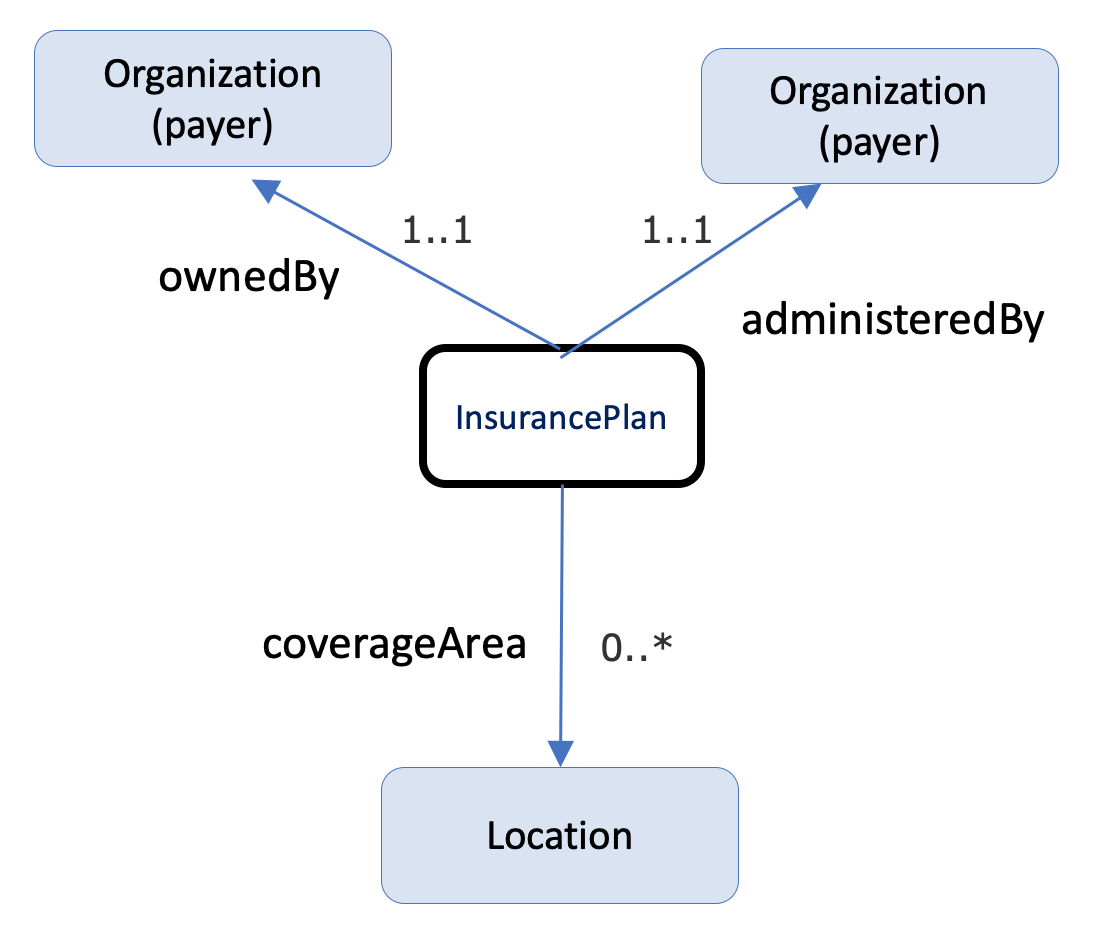
The HealthcareService resource is used to describe a single healthcare service or category of services that are provided by an organization at a location. The location of the services could be virtual, as with telemedicine services.
Figure 5: Healthcare Service
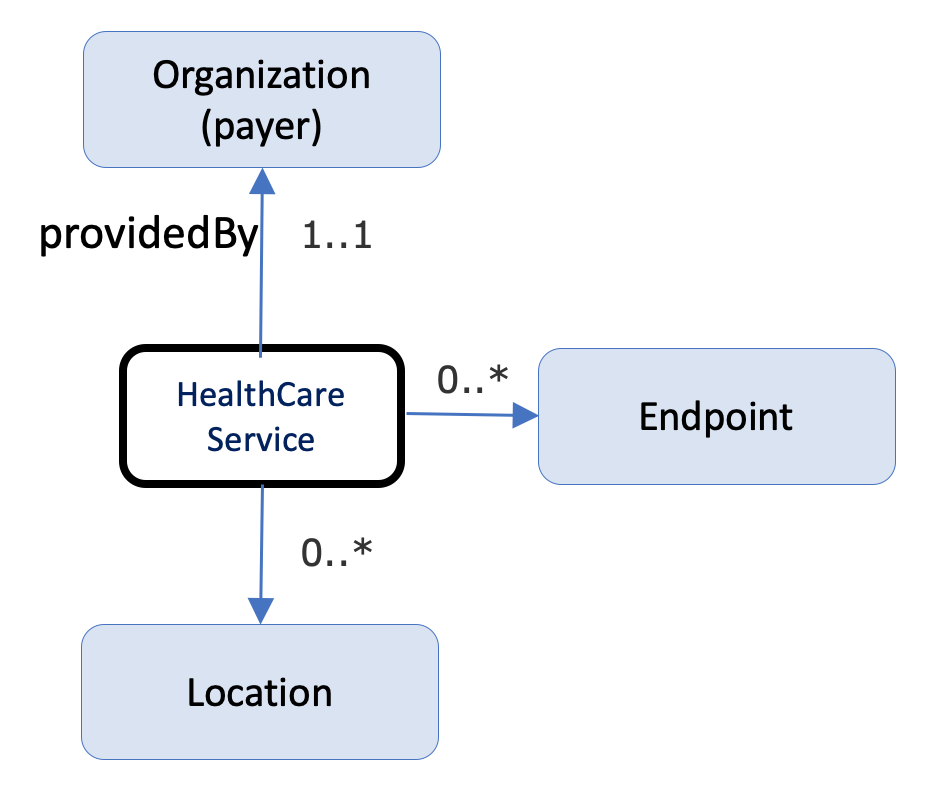
An endpoint describes the technical details of a location that can be connected to for the delivery/retrieval of information. Sufficient information is required to ensure that a connection can be made securely, and appropriate data transmitted as defined by the endpoint owner.
A Location includes both incidental locations (a place which is used for healthcare without prior designation or authorization) and dedicated, formally appointed locations. Locations may be private, public, mobile or fixed and scale from small freezers to full hospital buildings or parking garages.
A network is a group of practitioners and organizations that provide healthcare services for individuals enrolled in a health insurance product/plan (typically on behalf of a payer).
Figure 6: Network

Access to the plan-net service should not require authentication, and the server should not maintain any records that could associate the consumer with the entities that was queried.
A conformant plan-net service SHALL NOT require a directory mobile application to send consumer identifying information in order to query content.
A directory mobile application SHALL NOT send consumer identifiable information when querying a formulary service.
| Name | |
|---|---|
| Dan Chaput | daniel.chaput@hhs.gov |
| Alex Kontur | alex.kontur@hhs.gov |
| Brian Postlethwaite | brian.postlethwaite@health.telstra.com |
| Bob Dieterle | rdieterle@enablecare.us |